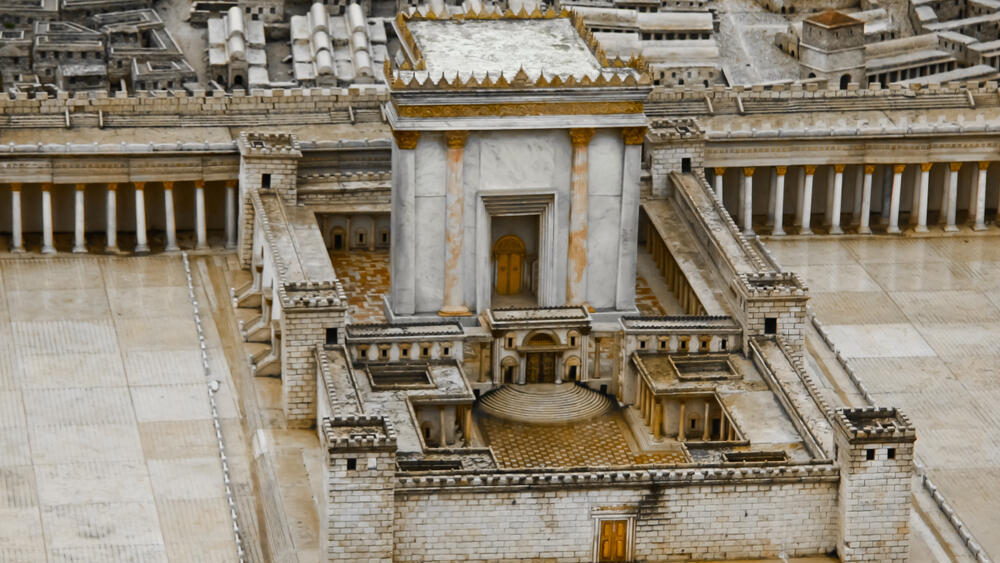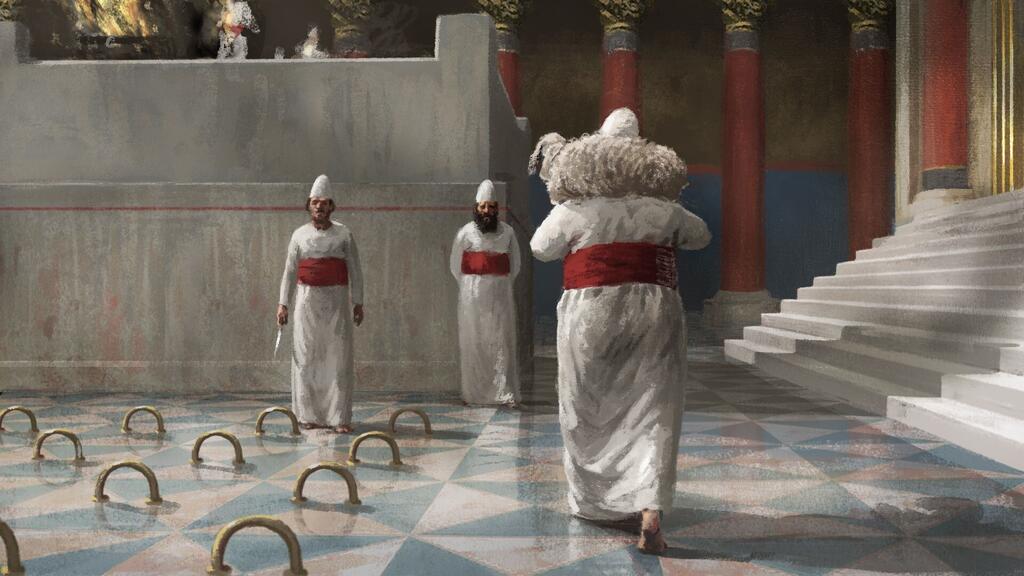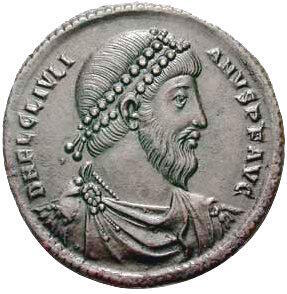On Tisha B'Av, Jews worldwide observe a day of mourning for the destruction of the two Temples. Throughout the world, they fast, pray, and beseech for the rebuilding of the Third Temple. A forgotten chapter in history teaches us that not only were Jews granted permission in the past to construct the Third Temple, but the sages (Hazal) deliberately overlooked this dramatic event.
Read more:
Dr. Yonatan Moss not only teaches in the Department of Religious Studies at the Hebrew University but also disseminates Torah knowledge at the Pontifical Gregorian University, located near the Vatican in Rome. According to him, on July 19, 362, the Roman Emperor Julian arrived in the city of Antioch (now in southern Turkey). Despite being in the midst of a military campaign against the Persians, the emperor found time to meet with the Jewish community leaders in the city and asked them why they did not offer sacrifices like their ancestors. The Jews replied that their Temple had been destroyed, and in response, the emperor granted them permission to rebuild it and renew the sacrificial offerings.
"Emperor Julian had a personal interest in this matter," explains Moss. "He was born in 331, shortly after the Roman imperial policy shifted from persecuting Christianity to tolerating and favoring it. He was raised as a Christian within the Christian imperial family, but upon reaching adulthood, he rediscovered the traditional Roman religion of his ancestors."
The abandonment of Christianity led to him being nicknamed "Julian the Apostate." "In the traditional Roman religion, animal sacrifices were widespread, while in Christianity, this practice had ceased. Julian sought to reinstate it and hoped to find Jewish allies for this aspiration," Moss adds. "However, from the Jewish perspective, the situation was more complex. The Jews had grown accustomed to religious life without sacrifices. They had lived for almost 300 years without a Temple and without offerings, whereas in Christianity, despite the cessation of blood sacrifices, the religious language continued to sanctify sacrifices and maintain a sacrificial vocabulary."
We have become accustomed to thinking that in Judaism, the Temple stands at the center, and even if it was destroyed, there is a longing for its rebuilding. We viewed Christianity as a religion that rejoices in the destruction of the Temple. It seems that you claim the opposite.
"To understand this event, one must grasp the historical relationship between Christianity and Judaism. In the past, the accepted model for understanding this relationship assumed that Christianity emerged as a branch from the Jewish tree, a tree that continued to grow in the same direction as before. Think of the English letter 'Y' – Judaism is the right branch of the letter, and its foundation is the Torah, the First and Second Temples, and then Rabbinic Judaism, which continued to grow in the same direction even after Christianity sprouted from it, following its own path, like the left branch of the letter.
"In recent years, many scholars of Judaism and Christianity, including myself, have considered an alternative historical model that resembles the capital letter 'Y.' The trunk is the Torah and the Temples, but the destruction of the Second Temple and the major failure of the Bar Kochba revolt created a significant split. Rabbinic Judaism became one branch, while Christianity became the other. Instead of continuing to offer sacrifices, Jews sanctified prayer and Torah study, virtually reducing the priesthood's role, whereas Christians sanctified the Eucharist, sacrifices, and priesthood."
But in the Church, they do not offer animal sacrifices.
"During the time of the Temple, Judaism was ritualistic, centered around regular ceremonies of offering sacrifices, which only priests were allowed to perform. After the Temple's destruction, everyone, not just the priests, became obligated to pray at the times when sacrifices were offered in the Temple. The authority shifted from the priests to the Hazal who taught and interpreted the Torah. In contrast, Christianity adopted the ritual - in religious terms, the Church is called a "Temple," and in every church, there is an altar where ordained priests offer the sacrifice."
Which sacrifice?
"The act known as the 'Lord's Supper' is performed through the consumption of bread and wine. In Syriac, an Aramaic language still used by certain Christian communities today, this ceremony is called 'Qurban,' from the Hebrew word 'Korban' (sacrifice). This is how the rituals are conducted in Catholic and Orthodox churches and, to some extent, among Protestants as well. In the Orthodox Church, there is even a barrier separating the congregation from the priest, reminiscent of the High Priest's service on Yom Kippur. So, it is true that Christians have abandoned animal sacrifices, but the sacrificial-priestly-temple language is much more central to them than in Judaism, which developed after the Temple's destruction."
'Love for Mordecai and hate for Haman'
Decades after the destruction of the Temple on Tisha B'Av, the Romans, who were pagans, established a Roman city in Jerusalem called Aelia Capitolina. At its center stood the Temple of Jupiter, where they offered sacrifices. During the early centuries, Christianity was considered an illegitimate religion in the Roman Empire, but over time, it gained acceptance among the Romans. After the beginning of the 4th century, Emperor Constantine changed his long-standing policy and declared Christianity as the favored religion in the Roman Empire. However, when Julian the Apostate ascended to power in 361, he sought to reverse this trend and restore the pagan crown to its former glory.
Why did Julian the Apostate, who aimed to revert to paganism, want to assist the Jews?
In a letter written to the Jewish community, Julian explains that his motivation is both religious and social. He aspires to rebuild "the Holy City of Jerusalem... and to restore its inhabitants," so that there, as he writes, "I and you together may glorify the Most High God."
According to the Christian writings of that era, the picture is different. The Christian authors, some of whom personally knew Julian, claim that his favorable attitude towards the Jews stemmed from a combination of "love for Mordecai" and "hatred for Haman." He wanted to demonstrate to Christians that one of Jesus' central prophecies, which foresaw the destruction of the Temple with not one stone left upon another, was incorrect. Julian sought to rebuild the Jewish Temple and show that the Jews would return to their land. Furthermore, he aimed to emphasize that not only was he reviving the practice of live animal sacrifices, which had weakened with the establishment of Christianity, but also the Jews were returning to their ancient practice of offering such sacrifices. He also abolished the "Fiscus Judaicus," a tax imposed on Jews in the diaspora to support the Sanhedrin's institution in the Land of Israel.
How did the Jews receive the news of Julian's intentions?
Although not all Jews in the diaspora necessarily rejoiced at the possibility of rebuilding the Temple, they were pleased with the abolition of the tax. The sages in the Sanhedrin were slightly less happy, as they lost a significant source of income. The Hazal in the Talmudic institution almost entirely ignored the event, except for two vague mentions in the Yerushalmi Talmud, both attributed to Rabbi Aha. One mention suggests that the Temple could be rebuilt before the restoration of the Davidic line, while the other implies that the Temple would be rebuilt in the year of the Shemittah (Sabbatical year), which corresponds to the year 363-362 CE.
It is possible that in the Talmudic literature, there was silence regarding the events of that time. In contrast, in the Christian sources, it is told that the Jews rejoiced at Julian's initiative. Gregory, the Bishop of Nazianzus, in present-day Turkey, writes that while some Jews debated among themselves about Julian's plan, a significant number of Jews "hastened to work with enthusiasm." He also mentions that "the women contributed their jewelry to the work and carried earth in their bosoms without caring for the costliness of their garments or the delicacy of their bodies."
What happened to the initiative to rebuild the Temple?
It came to a halt after an earthquake, which is archaeologically documented. Christian writings also mention a fire that broke out in the area where the Temple was being constructed. Some speculate that it may have been caused by trapped gases beneath the ground that ignited. Regardless, these events were seen as signs, and the construction work was interrupted. The literature of the Hazal in the Talmud is an evolving literature. In my estimation, since they saw that the Temple was not rebuilt, it was preferable for them not to mention it.
Hazal preferred to study Halakhot of the Temple rather than rebuild it?
"It is not possible to determine the matter definitively, but the significant shift during that period occurred after the trauma of the sages following centuries of struggles between the Sadducees, Pharisees, Zealots, and other Jewish sects, as well as internal wars that led to the destruction. The primary goal of Hazal was to offer a clear and strong alternative to the sacrificial model. If one studied Torah, it was considered as if they offered a sacrifice. In other words, it was kind of like the real thing, but not a complete reconstruction. The Temple belongs to the past and the future, but it will never exist again."
"The conflicts between the various sects that led to the destruction were replaced by disputes within the Beit Midrash (hall dedicated to Torah study), within a culture of interpretation. Since then and to this day, the sages emphasized their authority not in the priesthood and sacrificial service but in the ongoing and renewed study of Torah, which includes a diversity of opinions and profound disagreements, but not sectarianism."
What is your conclusion from the period before the destruction of the Second Temple?
"These days, the State of Israel is experiencing a crisis. We find ourselves returning to a period of sectarianism, where each side fortifies its position and rejects the opposing side. The terrifying threat of destruction seems to be looming once again, driven by the same internal reasons that led to the previous destruction 1954 years ago. It is incumbent upon us, especially our leaders, to prevent this disaster from happening again, now."




